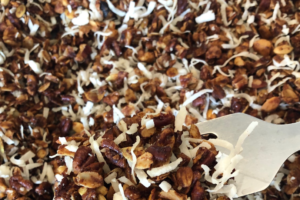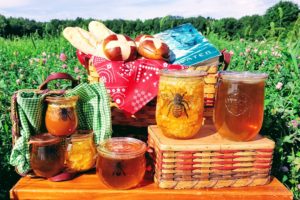On December 26, a legend, pioneering biologist, and advocate for endangered species, Edward O. Wilson passed away at 92. He lived a long life, full of love for all species on this planet. He was an American biologist, naturalist, and writer that influenced generations of biologists, like myself, in the areas of biodiversity, insects, and human nature. Perhaps the most notable thing about Dr. Wilson’s work was his ability to work effectively across the theoretical and applied nexus of biology to translate and inspire scientific relevancy beyond the boutique salons of academia into practical methods of stewardship and management of natural resources and ecosystem services.
Paula J. Ehrlich, president of the E.O. Wilson Biodiversity Foundation, New York Times, 12/27/2021
Wilson’s ambitious life started early, as a young boy finding solitude and adventure in the forests and mud holes of Alabama fascinated with all the living things. He was only seven years old when a fishing accident involving a collision of a fish fin and his right eye damaged his depth perception. Ever a curious and resolute learner of the biota, he shifted his focus to ‘all the small things’ (e.g. insects, particularly ants and butterflies) that he could still look at up close with his distorted vision. His fascination and determination persevered through many challenges across his life, which in and of itself was brilliant.



Humans can credit much of our understanding in making predictions about biodiversity (the number of species in an area) able to populate different habitats from islands to lakes to forests and other places to Drs. Wilson and MacArthur’s book, the ‘Theory of Island Biogeography.’ Taking that idea further, Dr. Wilson significantly impacted our comprehension and attention to how the destruction and fragmentation of habitats contribute to extinctions of species leading to the field of Conservation Biology. While Dr. Wilson warned of the dangers of a mass extinction, he never considered the planet doomed. “I’m optimistic,” he said in an interview in 2012. ‘I think we can pass from conquerors to stewards.” Many biological conservation ideas have trickled into and influenced the field of sustainable agriculture and agroecology, ideas and applications that contribute to our practices on our family farm at Firefly Fields.
While today’s food and agricultural systems have succeeded in supplying large volumes of food to global markets, high-external inputs, resource intensive systems have caused soil depletion, water scarcities, biodiversity loss, and more detrimental impacts to the planet. Sustainable agriculture and agroecology seek to optimize interactions between plants, animals, humans, and the environment while taking into consideration the social/human aspects that must be addressed for a sustainable and fair food system. Such efforts go beyond the Organic Certification label and process. As consumers become increasingly aware, there are significant difference among organic farming practices and not all are equal or even beneficial for biodiversity and/or the environment. When we talk about going ‘Beeyond Organic’ on our farm, we are referencing the aims of agroecological principles.





The Food and Agriculture Organization of the United Nations (FAO) published ‘The 10 Elements of Agroecology: Guiding the Transition to Sustainable Food and Agricultural Systems.” You can read the entire publication here. Some of these elements have been around for a long time on small-scale, family farms preceding Wilson’s birth in the 1920’s. However, Wilson’s steady, persistent efforts to understand and advocate for biological diversity and conservation identified, strengthened, and extended human’s comprehension and actionable roles in stewarding life and resources important to the planet and essential for sustainable agriculture.
To honor Dr. Wilson’s Legacy and fingerprints left on sustainable agriculture, it seems only appropriate to list the 10 Elements of Agroecology.
1. DIVERSITY
Diversification is key to agroecological transitions to ensure food security and nutrition while conserving, protecting and enhancing natural resources.
2. CO-CREATION AND SHARING OF KNOWLEDGE
Agriculture innovations respond better to local challenges when they are co-created through participatory processes.
3. SYNERGIES
Building synergies enhances key functions across food systems, supporting production and multiple ecosystem services.
4. EFFICIENCY
Innovative agroecological practices produce more using less external resources.
5. RECYCLING
More recycling means agricultural production with lower economic and environmental costs.
6. RESILIENCE
Enhanced resilience of people, communities and ecosystems is key to sustainable food and agricultural systems.
7. HUMAN AND SOCIAL VALUES
Protecting and improving rural livelihoods, equity and social well-being is essential for sustainable food and agricultural systems
8. CULTURE AND FOOD TRADITIONS
By supporting healthy, diversified and culturally appropriate diets, agroecology contributes to food security and nutrition while maintaining the health of ecosystems.
9. RESPONSIBLE GOVERNANCE
Sustainable food and agriculture requires responsible and effective governance mechanism at different scales – from local to national to global.
10. CIRCULAR AND SOLIDARITY ECONOMY
Circular and solidarity economies that reconnect producers and consumers provide innovative solutions for living within our planetary boundaries while ensuring the social foundation for inclusive and sustainable development.
Thank you for your contributions, Dr. Wilson. You made a difference.







Leave a Reply
Your email is safe with us.